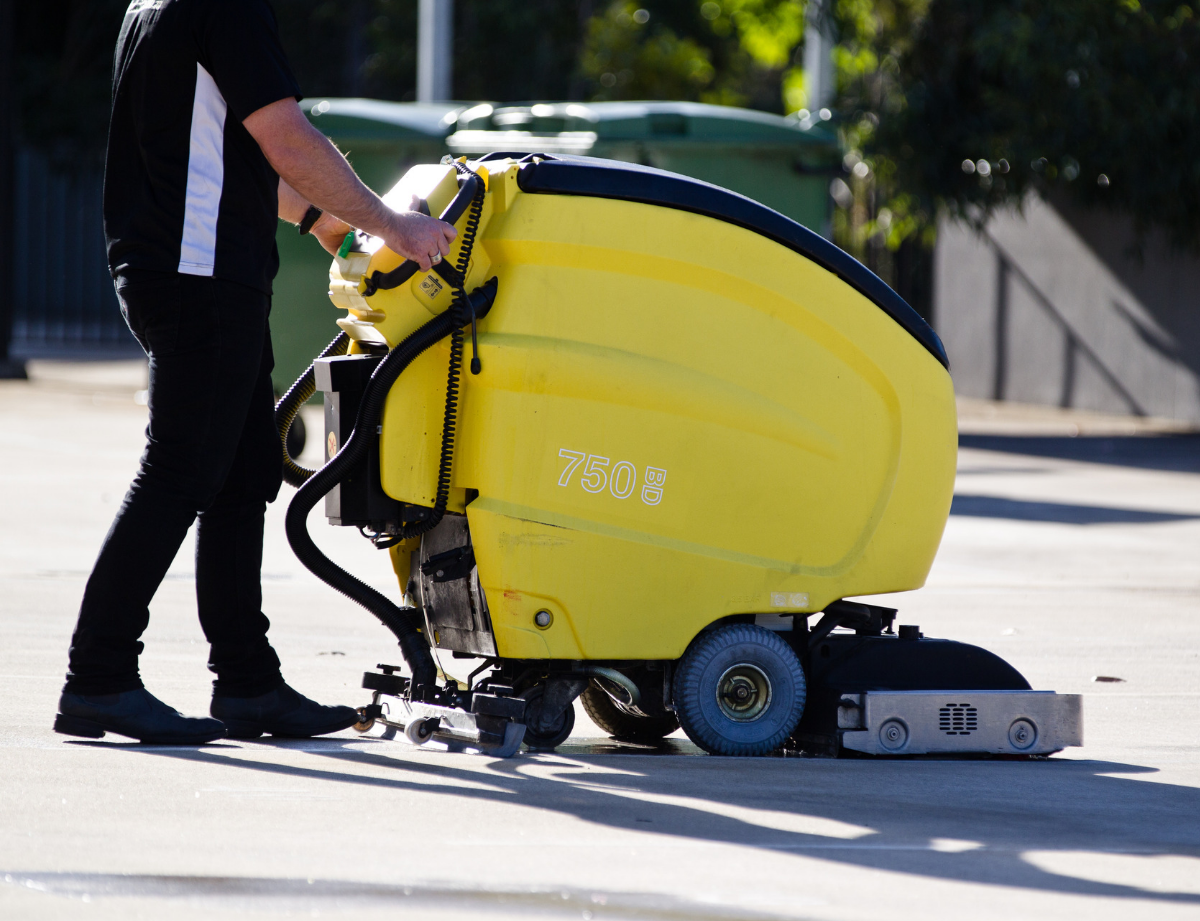
15 Jul Brisbane’s Industrial Cleaners Report on their Biggest Challenges
Cleaning in industrial zones, warehouses, factories and similar large commercial enterprises brings a whole new set of challenges that you just don’t encounter in your average office cleaning job. We face them all head on, and (almost) always overcome them. It’s just a day in the life for us, but if you’re not in the cleaning game, you might find it interesting.
Graffiti
Graffiti is a major challenge for industrial cleaners – especially in areas where it just keeps cropping back up. It seems as though every week or two there is more graffiti cropping up in those difficult areas – requiring a full spray kit to be brought out and a fun pressure-washing or scrubbing session.
The difficulty with graffiti is that you can’t let it get out of hand. Graffiti just attracts more graffiti. As such, every time it crops up, we have to get on top of it immediately, so that it doesn’t send the message that it’s a good spot to graffiti. Getting rid of graffiti often isn’t as straightforward as it seems, either. Different surfaces and different conditions require a different approach to stripping it back.
Exits and Emergency Egress Zones
Many businesses have legal requirements to maintain the condition of the exits from their facilities and ensure evacuation assembly areas are clear and accessible. We often help businesses ensure that these areas are maintained correctly, particularly when major works are going on. However, the responsibility for the condition of these zones is ultimately that of the business and their assigned safety officers.
Heights
Heights are an ever-present challenge in our work. Whether it’s reaching those near-ceiling windows in a warehouse or dealing with cleaning requirements on the externals of a building, we often run into a height challenge in industrial cleaning work. Most of the height issues we come across are usually dealt with pretty easily. We have the skills and equipment to handle most of these concerns – but it can still throw a curveball.
Cold Room Cleaning
Cold room cleaning requires a fairly specific approach. The majority of cold rooms we work on need to be left in an active state while we conduct the cleaning. Cleaning industrial materials or animal fat and grease out of an active cold room can be a challenge. It’s freezing in there, and fat doesn’t respond very well in a cold environment. Thankfully, we have a few tricks up our sleeve.
Grease
Industrial grease removal is one of the most common reasons we’re called in for one-off jobs. It can be a huge challenge for many businesses to remove grease to an adequate degree, particularly if it has built up over a long period of time. Other stains and residue problems, such as paint or oil, can present safety issues to employees and other people in the workspace. In addition, they can be a serious eyesore. Hiring professional industrial cleaners to scrub up grease, oil, paint stains and other residue can leave your workplace looking brand new – a great working environment for all.
Windows
In some industrial facilities, cleaning windows requires a significant amount more effort and expertise than your normal, run-of-the-mill window cleaning. Removing the results of manufacturing and industrial processes, such as fibres, chemical residue or embedded water stains can be laborious without the right equipment and knowledge – that’s why we’re here!
Sheer Filth
Sometimes the sheer amount of filth present in the cleaning zone is just outstanding. We get it, when your whole time is focussed on work and maximising productivity, being clean and tidy can take a backseat.
However, sometimes, it simply blows us away. It is as though filth was allowed to accumulate for years before we got a phone call. In so many cases, the situation is bordering on a severe fire hazard. Thankfully, we’re pretty handy at shifting bulk trash out of a facility that needs cleaning.
Adapting to New Jobs
It’s inevitable that we’re going to come across something new every now and then. We’ve been in the cleaning game for decades and have a huge repository of accumulated knowledge across our workforce, but sometimes we get a job that’s completely different to anything we’ve encountered in the past.
In these situations we always follow a similar procedure. The first step is always safety. If there are any chemical threats, ventilation issues or anything else that’s relevant to our safety, we need to know about it. Following that, it’s breaking the job down into its parts. At the end of the day, cleaning is cleaning. We might have to take a different route to get to the destination, but the ultimate goal is always leaving things spick and span.
